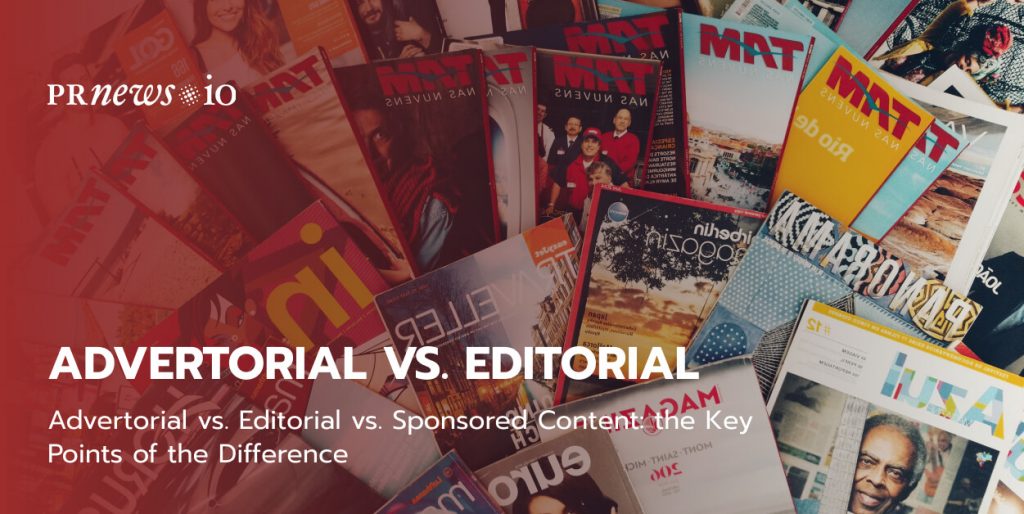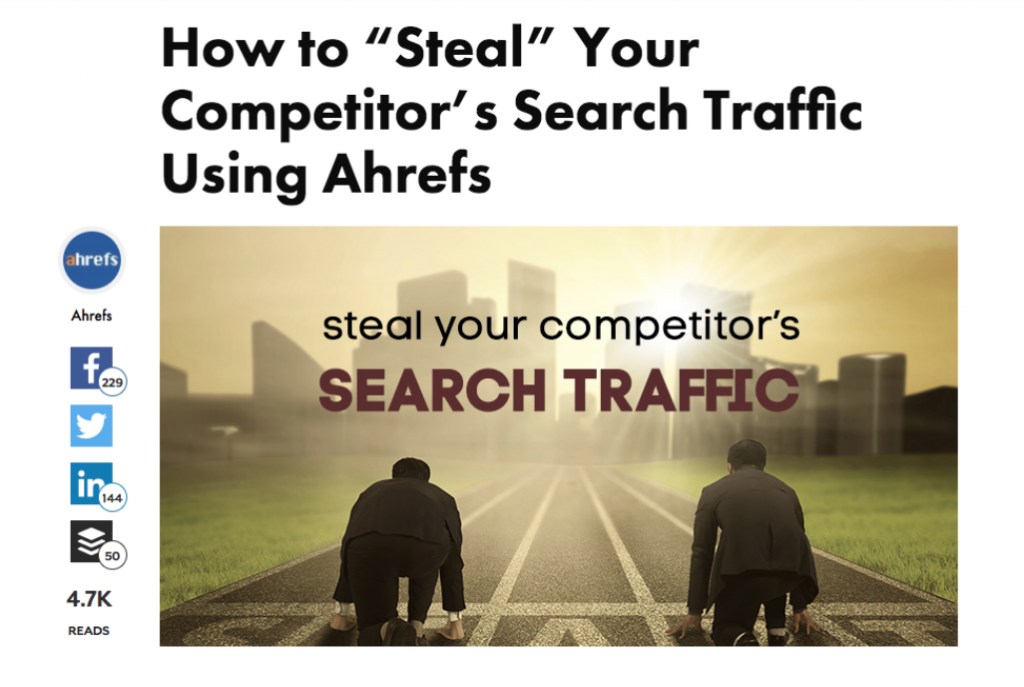
Advertorial vs. editorial. Considering which type of contempt marketing to use between editorial and advertorial and sponsored, it can be a complicated choice and feel like a grey area, especially if you are new to the world of PR and marketing. Each of these methods can be a great marketing tool for any company in the beauty, aesthetics, or wellness industries when used correctly. As a brand or business owner, it is important to be able to differentiate between editorials, advertorials, and sponsored so that you know what to expect when you invest effort and money into either of these for your business.
What’s the difference between editorial, sponsored, and advertorial? How to choose the best option? In this article, you´ll find out all you need to make the right choice.
Firstly, let’s define what are advertorial, editorial, and sponsored.
Advertorial Definition
Advertorial is paid media, so the business distributing the advert pays for the space and (within reason) dictates exactly its content.
An advertorial is bought through the advertising department as a paid spot in a print or digital publication. The content is typically controlled by the brand with some editorial comments and may be written by the media staff. Advertorials have distinct signs to make them feel different from the rest of the paper and inform the reader that they are engaging with an advertisement. However, some media outlets may closely imitate the look of an editorial article to help the advertising content “blend in.”
You can order advertorial services from PRNEWS.io.
Advertorial vs. Editorial vs. Sponsored content:
- Funding: The brand is paying directly to the advertising department of the media outlet for placement.
- Visual presentation: Looks like an advertisement. It is placed separately from the publication’s articles and editorial content.
- Credibility: This doesn´t go through the journalistic vetting process that editorial content must process.
- Author/byline: The author of the advertorial content is clearly identified as the brand or its spokesperson.
- Creative control: Development and final supervision over content is retained by the company.
- Imagery: This may include a promotional image, such as a branded photograph or product shot.
- Legal disclaimers: Advertorials may include copyright and trademark symbols, footnotes, references, and legal disclaimers.
Advertorial Examples
Good advertorials concentrate on benefits, not features. Marketers should appeal to the human needs and impact behind the product instead of reciting an elevator pitch.

Editorial Definition
The editorial is free. Editorial content is any content that’s created to inform, educate, or entertain. It tells readers about a topic or explains something to them. At its goal, editorial content is about providing value to the reader.
An editorial often has more credibility and reliability, because it has gone through journalistic vetting processes and is designed to arouse true interest. The underlying message is that this is credible information backed by the publication. It’s not created to sell. It’s not created to drive conversions.
It’s designed to demonstrate your knowledge, expertise, and authority in a given area.
Of course, that kind of content can make you money indirectly. But it´s not the first goal.
You’re giving readers the information they can use, which earns their trust. In the long run, that will drive more sales and conversions to you than direct selling.
Editorial vs. Advertorial vs. Sponsored content:
- Funding: It is free. The media outlet doesn´t receive payments for running an editorial. Therefore, it must provide real value to readers in order to be published.
- Visual presentation: Looks like the publication’s regular posts and editorial content.
- Credibility: It is designed by the publication’s editorial team – after any research and vetting they may apply, which makes the content more credible and reliable to its readers.
- Author/byline: The author may be identified as a journalist or editor hired by the media outlet. It can also be the media publication’s editorial team or a wire service.
- Creative control: Development and final control over content is conducted by the media outlet’s editorial team.
- Imagery: Any accompanying image must be appropriate to the topic and unbranded. Lifestyle photography works best.
- Legal disclaimers: Stick to the format and style of the article. There are no footnotes, references, disclaimers, or copyright/trademark symbols are permitted.
Editorial Examples

Credits: carminemastropierro
Sponsored Content Definition
“Promoted”, “Paid post”, “Presented by”, “Sponsored by”, “Partnered with”, “Affiliated with”…
Remember it? These phrases are indicators of sponsored content. It means that a company has spent some effort and budget to show you its content.
Sponsored content is a form of advertising issued by publishers or social media influencers in a format and quality they are known for whether they be articles, photos, videos, or other executions. Brands co-create this content to generate conversations around their product category or even their product.
That is to say, sponsored content is an ad that looks like it’s supposed to be there. It gives a feeling of natural content for a platform, instead of an intrusive advertisement.
Sponsored content is a simple yet effective way to send your promotional message to new audiences.
Sponsored vs. Editorial vs Advertorial content:
- Funding: Payment also is made directly to the media outlet or marketing agency for placement.
- Visual presentation: Doesn´t look like an advertisement; sponsored information is included in the posts and editorial content.
- Credibility: Can go through the journalistic vetting process that editorial content must follow.
- Author/byline: The author of the piece is not identified as the brand or its representative.
- Creative control: Development and final control over content is not retained by the media outlet.
- Imagery: This may include a promotional image, such as a branded photograph or product shot.
- Legal disclaimers: These may include footnotes, references, and legal disclaimers. Can also include copyright and trademark symbols.
Sponsored content can increase reach your audience in a non-intrusive manner. Because it takes after editorial content, people are more likely to engage with it.
This can help you to:
- Raise brand awareness
- Inform your audience
- Gain trust and credibility
- Set up thought leadership
If users get value from your content, they’ll likely continue engaging with your business in the future and may even become customers.
Sponsored Examples
In the sponsored articles usually, you will find names of brands, and addresses of the restaurants, shops, etc. The overall information may be useful and interesting, but definitely, brands, companies, and services will be included there.

Read more: What is Sponsored Content? Everything You Need To Know
How Can You Leverage Editorial from Paid Advertising?
There are a few ways you can try to leverage editorial in the publication you have advertised in, aside from simply asking the question in the first instance.
1. Themed articles:
When you start the process of purchasing an advert, ask to see an editorial calendar and look out for themed publications. It may be a summer travel special, an autumn fashion issue, or a Christmas gift guide.
A good advertising sales team will inform clients of this when booking advertising to align advertising content with the editorial theme. For example, if you conduct a Christmas gift fair and want to advertise prior to the event, an issue focusing on Christmas gifts and what to buy would be perfect, provided the timings match up, of course. This will give you the perfect opportunity to show off your product or service at a time when editors may be looking for something just like it.
2. Advertorials:
This is also where advertorials can form an effective item of your marketing plan. As we’ve seen, advertorials can be very useful to inform readers about a product launch, but they can also be used to secure true editorial in the same or a linked publication. Ensure you ask about this and negotiate with the media sales representative when you book an advertorial, noting any deadlines.
3. Other channels:
There is so much overlapping between traditional print media and social media that we can’t talk about advertising and editorial without telling this. If you promote in a publication, ensure you ask them about the opportunity for linked posts to your content and retweets on their social media channels. This should help give you fantastic promotions and increase the number of followers on your own accounts.
Conclusion
Consumers today are bombarded with different content from different resources. Thus many internet users ignore ads on web pages or even install software to block them entirely.
A combination of editorial, advertorial, and sponsored content can help you reach your target audience in a non-invasive way and even improve your brand’s credibility.
Content Marketing Platform
- 100,000+ media publications;
- get backlinks to your product;
- scale work with content distribution.
Advertorial vs. Editorial FAQ
What is an advertorial?
An advertorial is paid advertisement designed as a usual article, video, or webpage. An advertorial may contain useful information, but its final goal is to promote a product. Advertorials can generate effective reader engagement and can be more effective than classic ordinary ads.
How to write an editorial?
- Thoroughly research your topic. Before you start to write, ensure you have a thorough knowledge of your topic—particularly if it’s a complex issue.
- Pick a thesis statement. Your thesis statement will create the basis of your editorial. Take the time to craft a clear, concise statement that will lead to the rest of your editorial structure.
- Support your thesis with several main points. Depending on your prescribed article length, plan to pick two to four main points to back up your thesis statement. Expect to dedicate a paragraph or two to each of these points.
- Acknowledge counter-arguments. You can admit points to the side or spend a paragraph disproving counterarguments, but it’s important to address alternative points of view to buttress your own argument.
- Close it with a call to action or summary of your main point. At the end of an editorial focused on praise or disapproval, return to your thesis statement and connect any ideas that remain open-ended.
- Edit your article until you reach a final draft. Read over your draft and remove unnecessary words, stereotypes, or sentences that distract from the central idea. Then proofread your editorial for grammatical errors and typos.
What is an advertorial?
An advertorial is paid advertisement designed as a usual article, video, or webpage. An advertorial may contain useful information, but its final goal is to promote a product. Advertorials can generate effective reader engagement and can be more effective than classic ordinary ads.
Save to Pinterest
You can save this page to your Pinterest board for later.







